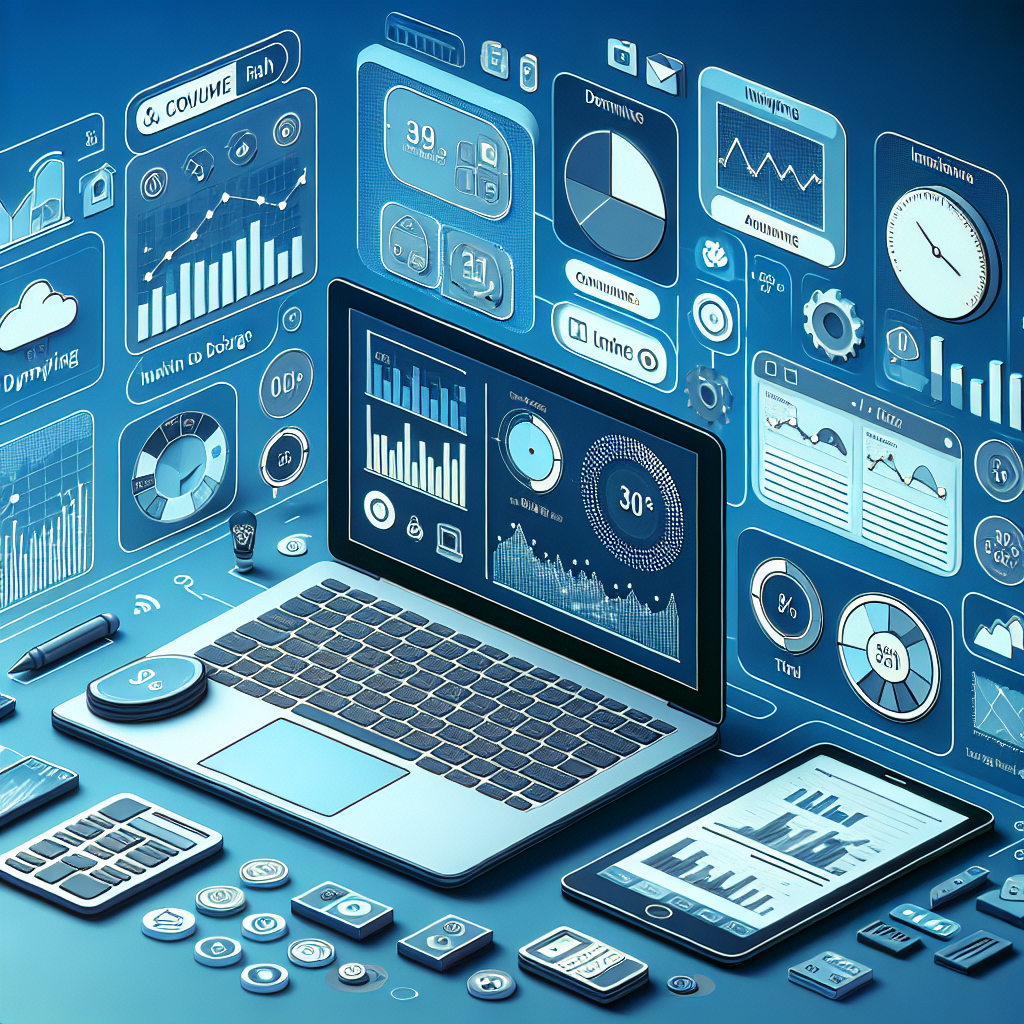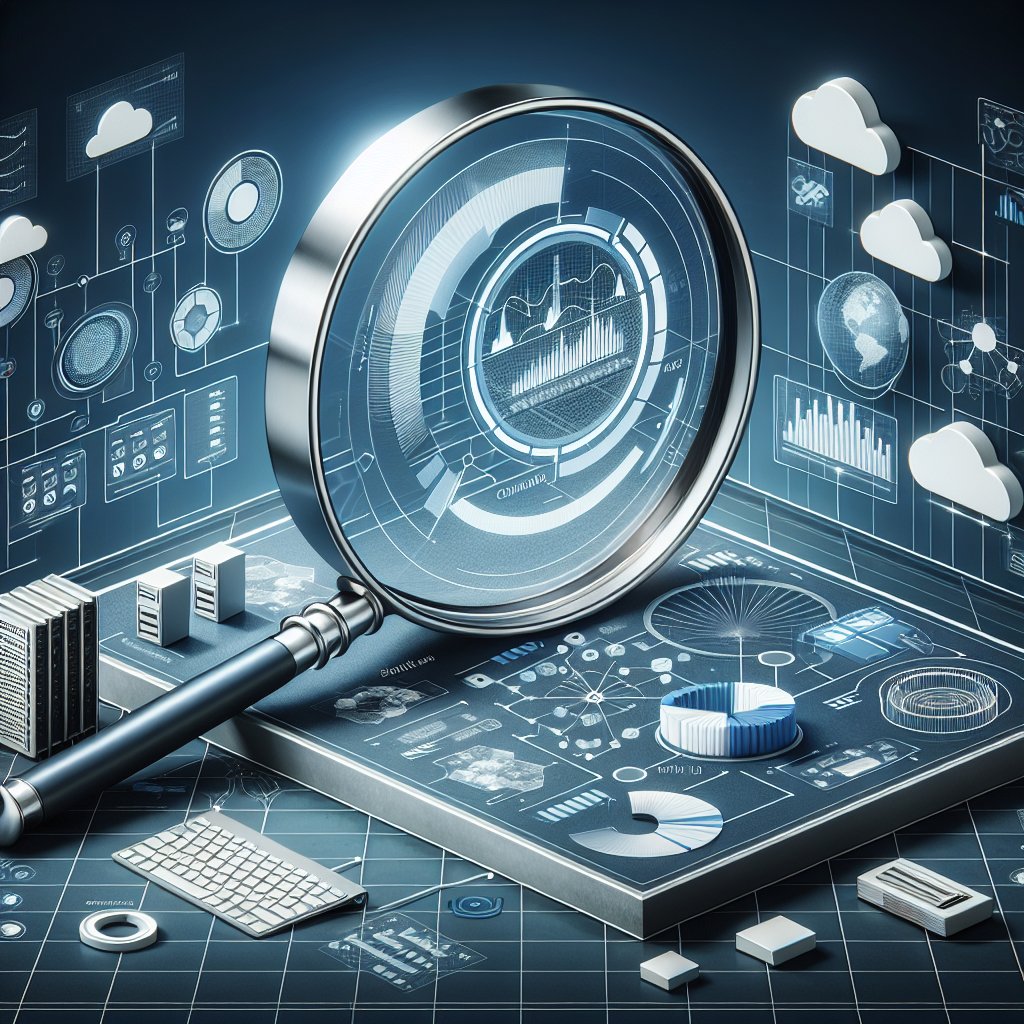Data usage monitoring tools are essential for individuals and businesses alike to keep track of their internet usage and avoid exceeding data limits. These tools provide valuable insights into how data is being consumed, whether it’s for browsing, streaming, or downloading. By actively monitoring data usage, users can prevent unexpected charges and ensure efficient use of their data plans. In this article, we will explore some of the best data usage monitoring tools available in the market, highlighting their features and benefits. Stay tuned to learn more about how these tools can help you manage your data more effectively.
Understanding Data Usage Monitoring Tools

Data usage monitoring tools refer to software applications or programs designed to track and analyze the amount of data consumed by a device or network within a specific period. These tools provide valuable insights into data usage patterns, helping users optimize their internet usage and prevent overage charges.
Definition of Data Usage Monitoring Tools
- Data usage monitoring tools are specialized software solutions that monitor and track the amount of data transmitted and received by a device or network.
- These tools typically offer real-time monitoring capabilities, allowing users to stay informed about their data consumption levels.
- By collecting and analyzing data usage metrics, these tools enable users to identify data-intensive activities and adjust their usage habits accordingly.
Importance of Monitoring Data Usage
- Monitoring data usage is crucial for individuals and organizations alike to manage their internet expenses effectively.
- By tracking data usage in real-time, users can prevent unexpected charges from exceeding their data limits set by their Internet Service Providers (ISPs).
- Understanding data usage patterns can also help users identify potential security threats or unauthorized access to their network, enhancing data security measures.
Common Misconceptions About Data Usage Monitoring
- One common misconception is that data usage monitoring tools are only necessary for users with limited data plans. However, even users with unlimited data plans can benefit from monitoring their usage to optimize network performance.
- Another misconception is that data usage monitoring tools are complex and difficult to use. In reality, many data usage monitoring tools offer user-friendly interfaces and simple setups, making them accessible to users with varying technical expertise levels.
Types of Data Usage Monitoring Tools
Real-time Monitoring Tools
Real-time monitoring tools are essential for individuals and businesses looking to actively track their data usage as it happens. These tools provide instant updates and insights into data consumption patterns, allowing users to make immediate adjustments to their usage behavior.
Benefits of real-time monitoring tools include:
– Immediate awareness of data usage spikes or unusual activity
– Ability to set alerts for reaching specified data thresholds
– Enhanced control over data consumption habits
Examples of real-time monitoring tools:
1. My Data Manager: This app offers real-time monitoring features, along with customizable alerts and detailed usage reports.
2. GlassWire: Known for its user-friendly interface, GlassWire provides real-time data usage insights and network monitoring capabilities for both desktop and mobile devices.
3. NetGuard: A popular choice for Android users, NetGuard offers real-time data usage tracking and the ability to block specific apps from accessing the internet.
Historical Data Analysis Tools
Historical data analysis tools play a crucial role in monitoring data usage patterns over time, providing valuable insights and trends for users. These tools offer a comprehensive overview of past data consumption, allowing individuals and organizations to make informed decisions regarding their data usage habits and optimize their data plans accordingly.
Advantages of Historical Data Analysis
- Identifying Usage Trends: Historical data analysis tools enable users to identify patterns and trends in their data usage, such as peak usage times or data-intensive activities.
- Budget Planning: By analyzing past data usage, individuals can better plan and budget for their future data needs, avoiding unexpected overage charges.
- Optimization: Understanding historical data consumption patterns empowers users to optimize their data usage, potentially saving costs and maximizing efficiency.
- Performance Monitoring: These tools help in monitoring the performance of data plans and assessing whether they align with the actual data usage requirements.
Popular Historical Data Analysis Tools in the Market
- My Data Manager: This tool offers detailed insights into data usage trends, allowing users to track their usage across different apps and services. It provides alerts for approaching data limits and offers customizable usage reports.
- Data Usage Monitor: Known for its user-friendly interface, Data Usage Monitor tracks data usage in real-time and provides historical data analysis to help users understand their consumption patterns. It also offers customizable widgets for quick access to usage information.
- GlassWire: A versatile historical data analysis tool, GlassWire not only monitors data usage but also provides insights into network activity, including app-specific usage details. It offers visual representations of data consumption trends and alerts for unusual data usage behavior.
In conclusion, historical data analysis tools are invaluable for individuals and organizations looking to gain a deeper understanding of their data usage habits and make informed decisions to optimize their data plans. The market offers a variety of tools catering to different user preferences and requirements, ensuring that users can effectively monitor and manage their data usage over time.

Features to Look for in Data Usage Monitoring Tools
When evaluating data usage monitoring tools, there are several key features that can significantly impact their effectiveness in helping users manage their data consumption. Here are some essential features to consider:
- Real-Time Monitoring Capability: A critical feature to look for in data usage monitoring tools is the ability to provide real-time monitoring of data usage. This feature allows users to stay informed about their current data consumption levels and take immediate action if necessary.
- Customizable Alerts and Notifications: Another important feature to consider is the availability of customizable alerts and notifications. Users should be able to set thresholds for data usage and receive alerts when they are approaching or exceeding these limits. This proactive approach helps users avoid unexpected data overages.
- Historical Data Analysis: Effective data monitoring tools should also offer the ability to analyze historical data usage patterns. By reviewing past usage trends, users can gain valuable insights into their data consumption behavior and make informed decisions about managing their usage in the future.
- Multi-Platform Compatibility: It is beneficial to choose a monitoring tool that is compatible with multiple platforms and devices. Whether users are monitoring data usage on their smartphones, tablets, or computers, having a tool that can aggregate data from various sources provides a comprehensive view of overall usage.
- Data Visualization Tools: Data visualization plays a crucial role in making sense of complex data usage patterns. Look for monitoring tools that offer intuitive graphs, charts, and reports to help users visualize their data consumption in a clear and digestible format. Visual representations can simplify data analysis and aid in identifying trends or anomalies.
By considering these key features when evaluating data usage monitoring tools, users can select a tool that best suits their needs and empowers them to effectively manage their data usage.
Best Practices for Efficient Data Monitoring
Setting Usage Limits
Setting usage limits is a crucial aspect of data monitoring to avoid exceeding data allowances and incurring additional charges. By establishing clear boundaries for data usage, individuals and organizations can effectively manage their internet consumption. Here are some key points to consider when setting usage limits:
- Establishing data usage limits: Determine the maximum amount of data that can be used within a specific time frame, whether daily, weekly, or monthly. This helps in controlling data expenditure and preventing unexpected overages.
- How to effectively manage and monitor data limits: Regularly track data usage to ensure it stays within the set limits. Utilize data monitoring tools to keep a close eye on consumption patterns and identify any unusual spikes in usage that may indicate a breach of limits.
- Tools that assist in setting usage limits: There are various data monitoring tools available that offer features to help users set and manage data usage limits effectively. These tools often provide real-time updates on data consumption, customized alerts when nearing limits, and detailed reports to analyze usage trends. Some popular tools include My Data Manager, Data Usage Monitor, and GlassWire.
Analyzing Data Trends
Best Practices for Efficient Data Monitoring
Analyzing data trends is a crucial aspect of effective data monitoring as it provides valuable insights into usage patterns and helps in making informed decisions regarding data management strategies. By closely examining trends in data consumption, organizations can identify peak usage periods, potential bottlenecks, and areas for improvement.
- Importance of analyzing data trends
Analyzing data trends allows organizations to anticipate future data needs, prevent overages, and optimize data usage. It enables them to forecast demand accurately, allocate resources efficiently, and ensure smooth operations without interruptions due to data limitations. - Utilizing data trend analysis for optimization
By leveraging data trend analysis, organizations can streamline their data usage, identify opportunities for cost savings, and enhance overall productivity. This optimization can lead to better resource allocation, improved performance, and enhanced user experience. - Tools that aid in analyzing data trends effectively
There are various data monitoring tools available that facilitate in-depth analysis of data trends. These tools offer features such as real-time monitoring, customizable reports, and predictive analytics to help organizations track usage patterns, identify anomalies, and make data-driven decisions. Examples of such tools include NetFlow Analyzer, PRTG Network Monitor, and SolarWinds Network Performance Monitor.
Implementing Security Measures
- Ensuring data security while monitoring usage
- Data encryption protocols should be in place to safeguard information while it is being monitored.
- Access controls must be implemented to restrict unauthorized personnel from viewing sensitive data.
- Regular security audits should be conducted to identify and address any vulnerabilities in the monitoring system.
- Best practices to protect sensitive data
- Anonymization techniques can be applied to replace personally identifiable information with pseudonyms to protect user privacy.
- Implementing data masking to hide sensitive information from unauthorized users.
- Utilizing secure connections and networks to transmit data between the monitoring tool and the database.
- Security features to look for in monitoring tools
- Role-based access control to ensure that only authorized individuals can view specific data sets.
- Audit trails that log all activities within the monitoring tool for traceability and accountability.

- Integration with existing security tools such as firewalls and intrusion detection systems to enhance overall data protection.
How Data Usage Monitoring Tools Improve Internet Experience
Data usage monitoring tools play a crucial role in enhancing the overall internet experience for users. By efficiently managing data consumption, these tools contribute to improving internet speed, optimizing usage for cost-effectiveness, and ensuring a seamless online experience.
Enhancing Internet Speed and Performance
- Real-time Monitoring: Data monitoring tools provide real-time insights into data consumption, allowing users to identify bandwidth-intensive applications or services that may be slowing down their internet speed.
- Bandwidth Allocation: These tools enable users to allocate bandwidth effectively, prioritizing critical tasks or applications that require a higher speed connection.
- Alert Systems: Monitoring tools often come with alert systems that notify users when their data usage is nearing a limit, helping to prevent speed throttling by ISPs.
Optimizing Data Usage for Cost-Efficiency
- Usage Analysis: Data monitoring tools offer detailed analysis of data usage patterns, helping users identify areas where data is being consumed unnecessarily or excessively.
- Budget Control: By setting data usage limits and receiving alerts when nearing thresholds, users can effectively control their expenses related to internet usage.
- Data Saving Tips: Some monitoring tools provide tips and recommendations on how to reduce data consumption without compromising on the internet experience, thus promoting cost-efficiency.
Ensuring a Seamless Online Experience with Monitoring Tools
- Traffic Prioritization: Monitoring tools allow users to prioritize traffic based on their preferences, ensuring a smooth online experience for activities such as video streaming, gaming, or remote work.
- Network Security: By monitoring data usage, users can detect any unusual or unauthorized activity on their network, enhancing security and preventing potential threats.
- Performance Optimization: These tools help in optimizing overall network performance by identifying and resolving issues that may be affecting internet speed or connectivity.
FAQs for Exploring the Best Data Usage Monitoring Tools: What You Need to Know
What are data usage monitoring tools?
Data usage monitoring tools are software applications or tools that help users track, analyze, and manage their data consumption on different devices and networks. These tools provide valuable insights into how data is being used, which applications are consuming the most data, and how to optimize data usage to prevent overages.
Why should I use data usage monitoring tools?
Using data usage monitoring tools can help you stay within your data limits, avoid unexpected charges on your Internet or mobile data plan, and identify data-draining activities that can hinder your network performance. These tools also provide valuable information on your data usage patterns, so you can make informed decisions on how to optimize your data consumption.
Are there free data usage monitoring tools available?
Yes, there are several free data usage monitoring tools available for both desktop and mobile devices. Some popular options include My Data Manager, Data Usage Monitor, and GlassWire. These tools offer basic data tracking and alert features for free, with the option to upgrade to premium versions for more advanced functionalities.
How do data usage monitoring tools work?
Data usage monitoring tools work by tracking and analyzing data consumption on your devices through various metrics such as app usage, network activity, and data usage trends. They usually provide real-time notifications and alerts when you are approaching your data limits, as well as detailed reports on your data usage patterns for better monitoring and optimization.
Can data usage monitoring tools help me save money on my data plan?
Yes, data usage monitoring tools can help you save money on your data plan by allowing you to monitor and control your data consumption more effectively. By identifying data-hungry apps and activities, you can adjust your usage behavior to stay within your data limits and avoid costly overages. Additionally, these tools can provide insights on how to optimize your data usage and potentially downgrade to a more cost-effective data plan based on your actual usage patterns.


